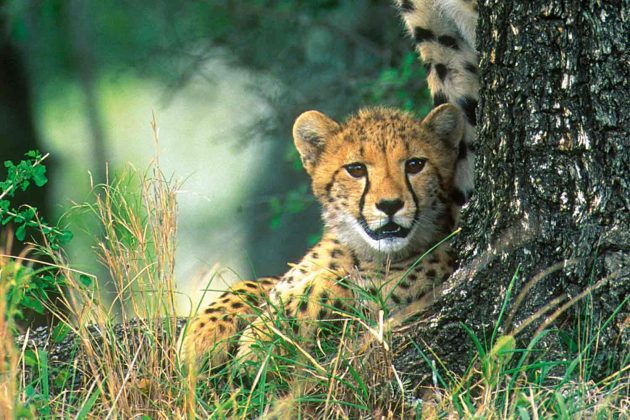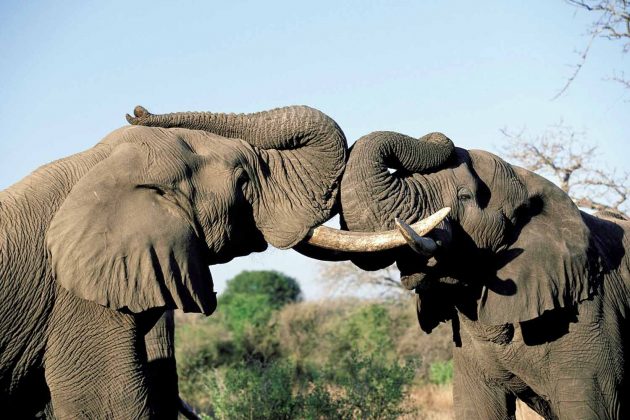SOUTH AFRICA: UNPREDICTABLE AND WILD
It was two-and-a-half hours into our bumpy, dusty and supremely uncomfortable ride—thanks to the unyielding roadwork being carried out on the N1 highway—from Johannesburg to the Welgevonden Game Reserve, when the irony of the situation hit us like a ton of bricks. We were lost, thanks to our Land Cruiser’s faulty GPS system and headed to Welgevonden, that when translated from Dutch into English means ‘well-found’. I kid you not!
Only when our travel-weary minds registered the presence of a cellular phone in our midst, did sanity return. A quick call to the game reserve’s office and we were back on the right track and ready to begin our safari with renewed enthusiasm and wide-eyed wonder. As one of South Africa’s premier private game reserves, this malaria-free, 37,500 hectares large wildlife haven is nestled in the Waterberg District of South Africa’s northern most province of Limpopo. And, for the next 24 hours, my seven friends and I were to partake in its feral bounty on a safari that promised to be nothing short of EPIC.
We were booked into the ultra-luxe and chic Clifftop Exclusive Safari Hideaway that is one of the many sumptuous digs that one can stay at while on safari at the Welgevonden Game Reserve. As is evident from its name, this bathed-in-white lodge dangles precariously from the lip of a cliff with the meandering Sterkstroom River coursing its way below. The lodge is so exclusive that it has only eight cottage suites that are decorated in a caveman motif—a kind of Fred Flintstone meets Philippe Starck, if you may—with white furniture that resemble rounded pebbles and plenty of plush faux fur rugs and throws to add a wild appeal. The attached white slatted decks have their own plunge pools to lounge about in post-safari.
But barely had we checked into our spiffy cottages, when Sebastian, our guide-cum-safari ranger, corralled us into his open-sided Land Cruiser for our evening safari drive. With a pleasant nip in the air, we set off towards the base of the cliff; a good half hour’s drive away, which is where the magic of the African savannah unfolds, as the steep edges of the mountain give way to an undulating landscape in Monet-esque brush strokes of ochre and burnt sienna. But our flora-induced stupor was quickly banished as our eyes fixated on a magnificent elephant that stood next to a baobab tree, gently nibbling at its leaves. Sebastian was quick to point out that the male elephant was in a state of ‘must’ wherein his hormones were at their raging worst and that going any closer to him would almost certainly have him charge at us.
Having no desire to be chased by a horny elephant on our very first day, we reverentially backed up and drove off into the sunset. A little further down, we spotted a herd of white rhino busy grooming themselves in a shallow pond, with various birds perched on their backs, giving them some much-needed help by picking at pesky bugs and ticks that the rotund beasts would otherwise have trouble getting rid off. The white rhino, we were told, was in abundance at the reserve as a recent census revealed that the reserve had one of the largest populations of white rhino on any private reserve in all of Africa.
Sensing our hunger pangs kicking in, Sebastian [whose name we had in very typical desi fashion shortened to ‘Saby’] suggested we drive up to his favourite spot on another cliff face for our evening sundowners. So, out came a folding table, linen, a cooler and steel tiffin boxes and we soon found ourselves munching on some typically South African snacks. From the Afrikaner dried, spicy beef sausages called droewors to the rubbery kudu meat biltong, which are dried pieces of salted game meat, we tried them all while taking swigs of warm rooibos tea and sparkling apple cider.
The distant roar of ‘Simba’ declaring his supremacy to all those who cared to hear was a sign that we needed to head back to our lodge and call it a day. We were after all on nature’s time, where one day at a time seemed to be the mantra.
Back at the lodge, it was straight to a gourmet dinner of butternut squash soup followed by impala steak, and pinot noir poached pears with cinnamon ice-cream that brought down the curtains on a day that had begun with despair, but had ended with the hope of an even more wildlife-infested tomorrow…
Saby’s incessant, loud thumping on our front doors at the ghastly hour of 5.30am was enough to get us out of bed and ready in 20 minutes for our early morning pre-breakfast safari that showed us another side of this ‘Garden of Eden’. One of the few sights that greeted our sleep-craving eyes was that of a graceful giraffe lithely crossing our path, only stopping to cast a long-lashed sideways glance at us ‘intruders’ as she strode towards the watering hole a few yards ahead. A pack of giddy headed hyenas continued to emit their shrill, high-pitched, laugh-like calls which Saby said was a sign that there was a fresh kill nearby.
True enough, his radio transmitter crackled to life as another ranger on the other end of the line confirmed that a pride of lions had in fact just killed a Thomson’s Gazelle a mere 100 yards from where we were at. Rushing to the spot, we kept a respectful distance as the King and his posse were enjoying the spoils of their hunt. “Disturbing!” was the common echo amongst our group, but yet we realised and understood that this was the way of the wild and an intrinsic act to ensure that the balance of nature was constantly maintained.
So, as we made our way back to the lodge, and after that, back to ‘our world’, we all unanimously agreed that everything about the wild is so unpredictable, never boring, always alluring and mind-bogglingly fascinating.
Yes, worthy of every single hyperbole… and more!
HOW TO GET THERE
The Welgevonden Game Reserve is in the Waterberg District of South Africa’s Limpopo region and can be reached from India via Johannesburg. Return air tickets start at approximately `32,000. From Johannesburg, the game reserve can be reached by road [approx. three hours].
WHEN TO VISIT
The best time to go on a safari in South Africa is from June to late September which is the period when, thanks to the dry winter, the wild animals come out to seek food and water that are in short supply.
ACCOMMODATION
Most lodges and camps in the Welgevonden Game Reserve offer deals that include airport pick ups and drops, accommodation, breakfast, lunch and dinner along with two daily safaris at dawn and dusk that come with morning tea/coffee, snacks and evening sundowners with nibbles. Almost all of them also have nightly African tribal dance performances to entertain the guests.
DOS AND DON’TS
- Do make sure to listen to what your safari guide tells you. These guys offer you a wealth of knowledge and information about the wildlife and plants.
- Don’t wear bright coloured clothes or accessories like hats, scarves etc. when on safari as they may attract the attention of the animals.
- Do switch off your cellular phone, iPods and other electronic devices while on safari, as they may interfere with the guide’s radio transmitter.
- Don’t wander off into the bush by yourself. Remember, you are in the midst of wild animals.
WHAT TO BUY
- Tribal masks
- Rooibos tea
- Droewor sausages and biltong
- Wine from South Africa’s Western Cape region
This was first published in the November 2012 issue of Complete Wellbeing.







